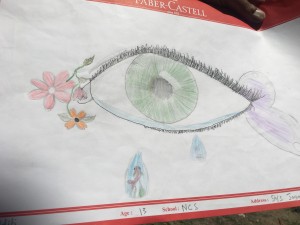Hundreds of freedom fighters and other prisoners were exiled by the colonial rulers to Andman and Nikobar islands, called as the ‘kalapani’, then. Most young people who take freedom for granted must at least visit the cellular jail or read about it to realise the unbearable torture that these valiant Indians had to bear so that we could live in pace. The subsequent settlement of Immigrants from Bangladesh, West Bengal, Chhatisgarh, Jharkhand, and few other states has created a mosaic of a diverse cultural practices. Karen community which was brought by British much earlier from Mynamar has fully integrated with other communities in the last hundred years or so. But the hardships of many of these settlers are not over.
The indigenous people like Jarawas, Nicobaris, Sentinels, Onge etc., are protected by the state from unwanted interacted with outsiders. Even if they are seen sitting on roadside, vehicles are not supposed to stop, commuters are warned about giving anything to prevent socio-cultural exploitation or fostering dependence. Thousand of Andmanis were killed in the notorious war of Aberdeeen in which due to betrayal by an Indian, a revolt by Andmani tribe was brutally crushed by the British.
Immense warmth shared by the communities during our 41st shodhyatra in the northern part of highly forested island state convinced us once again, how rich the cultural traditions of our society are. Even those who had practically no durable asset in their huts, welcomed us with open arms. They shared their stories, nutritionally rich cuisine and knowledge about extraordinary biodiversity; all very generously. SRISTI organised this shodhyatra in collaboration with various other volunteers of the Honey Bee Network besides NIF and GIAN, Palle srujana and Coastal Green Zone, a local voluntary organization set up by Shri Chanchal dutt, a very dedicated teacher. Chanchal has been a great motivator for children locally, he took children on sea coast and ask them to paint there about whatever they felt, some outstanding paintings came out.
Nirveda, class 8 student painted trees in a beautiful and evocative manner (see picture). Another student made a perceptive portrayal of the excessive use of plastic harming fishes as well as terrestrial environment. She made line drawing of many bottles and then made just a single sprout in between to draw attention to the agony of life. Still another student drew a fish in the tear falling from the eye, as if telling us to see the sea from the eye of fish. More information about crazy innovators like Sumanta Haldhar and S.S. Rao next week. As also the deep traditional knowledge and innovative practices learned during the shodhyatra. Will mention about how a private engineering college in Ahmedabad has agreed to offer admission to six to eight children from the islands passing out from school in coming year. Similarly we will like creative and innovative children from North-east and J and K to be also admitted in local colleges as mark of our respect for their contribution to make margins of India safe, beautiful and mainstreamed. Genius as a slogan put it on a school wall, makes the beginning, it is the workers who complete the mission. We should not forget that these settlers have enriched the landscapes and added to the biodiversity, local knowledge systems but many of them continue to be denied basic facilities and are all called encroaches even after forty years of settlement. This is a cause which the local administration and Home Ministry may consider empathetically, after all Andaman is a strategic port of India, full of huge potential for growth and prosperity.



